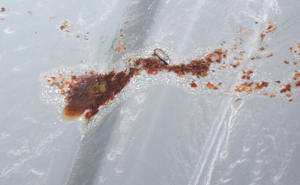The annual cost of steel corrosion is estimated to be over $400 billion in the United States and $2 trillion globally. Corrosion is a process where the metal can be degraded by electrochemical and/or chemical processes. This article will discuss the use of lead- and chrome-free corrosion inhibitive pigments in coatings where corrosion is primarily from electrochemical processes. Accordingly, the correct use of corrosion inhibitive pigments can be of enormous economic value.
Ron Lewarchik is a contributing author to UL Prospector and publishes articles monthly. Please read on for his expert findings on “Understanding Corrosion Inhibitive Pigments”:
Metals desire to be in their most thermodynamically stable state, which, in simplified terms, is the naturally occurring state of matter in its lowest energy state. Metals ordinarily exist naturally as oxides (e.g. iron oxide, aluminum oxide, zinc oxide, because oxides represent their lowest energy state. Corrosion is an electrochemical deterioration of a metal due to the reaction with its environment to transform the metal into its lowest energy state. Oxidation occurs at the anode (positive electrode) and reduction occurs at the cathode (negative electrode). Corrosion is normally accelerated by the presence of water, oxygen and salts (particularly of strong acids).

